Stories of young designers pursuing sustainable fashion
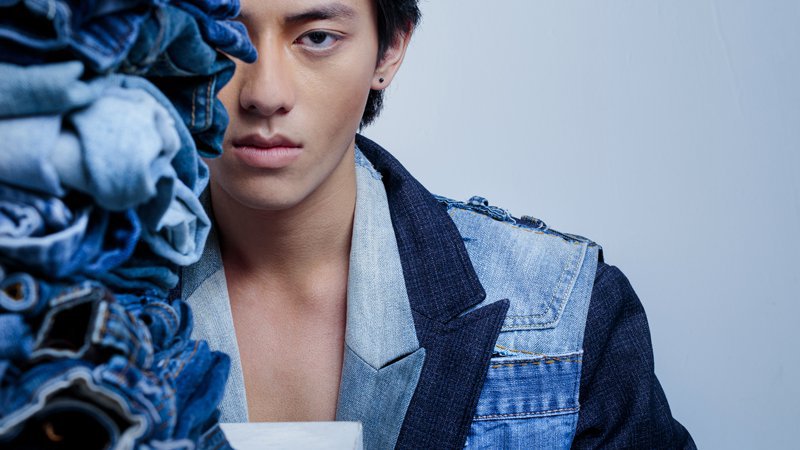
- tuan
- June 28, 2021
According to the United Nations, the fashion industry is the second most polluted industry. According to National Geographic, it takes 11,000 liters of water to make a pair of blue jeans. On average, the industry surplus exceeds 100 billion products each year. These are the numbers that have made sustainable fashion receive more and more attention in recent years.
Sustainable fashion can be expressed in many ways such as using natural fabrics, limiting wastes, considering ethical factors in terms of people and the environment, selective shopping...
London College for Design and Fashion – Hanoi (LCDF-Hanoi) has always been known as leading trainners in sustainable fashion such as: Designer Vu Thao with Km109, Vu Ta Linh – winner of Asian Fashion Design Competition - Audi Star Creation 2013, Le Ngoc Ha Thu – winner of global sustainable Fashion Design Competition - Redress Design Award 2020, to name a few.
And now let’s listen to our future designers about their very first steps towards sustainable fashion.
Hand sewing thousands of small pieces of fabric
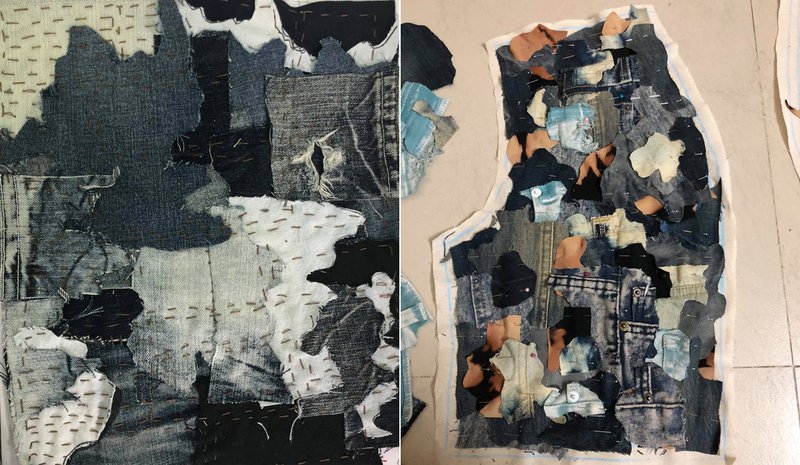
The pieces were cut and matched based on the idea of simulating the mossy walls we often see in slums.
Dao Thu Trang used old denim bought from vintage stores or sent by acquaintances then cut them into thousands of small pieces and sewed by hand. On average, each garment takes her 500 hours to make.
Not only taking advantage of used fabrics, Thu Trang's designs are also multi-functional and easy to coordinate with many styles to prolong product life. She shared: “As the fifth largest exporter of textiles and garments in the world, Vietnam has to face the problem of environmental pollution. Therefore, I want to use the skills and experience I learned from LCDF-Hanoi to become a sustainable fashion designer.
Hours of boiling wood and ordering new technology fabric from abroad
In term of the graduate collection, future designer Bui Thanh Lam shared: “The fabrics are all woven from natural fibers such as linen, 100% cotton, Merino sheep wool, silk, and organza woven from recycled polyester fibers. I dyed the fabric myself from A to Z to make sure the dye does not harm the environment.
The colors in Thanh Lam's collection such as orange brown, brown, and black are all dyed from natural materials such as Biancaea sappan, diospyros mollis and turmeric.
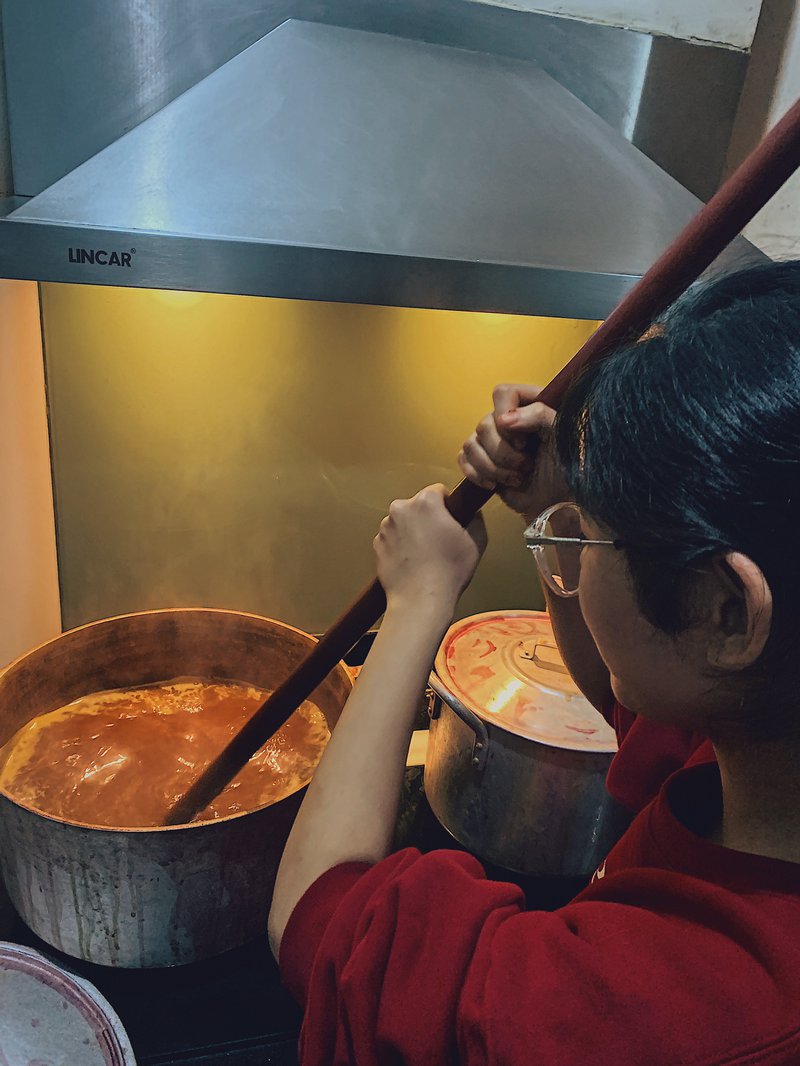
During the process of making the collection, Thanh Lam's house turned into a mini processing workshop because it was filled with pots for boiling wood and dying fabric.
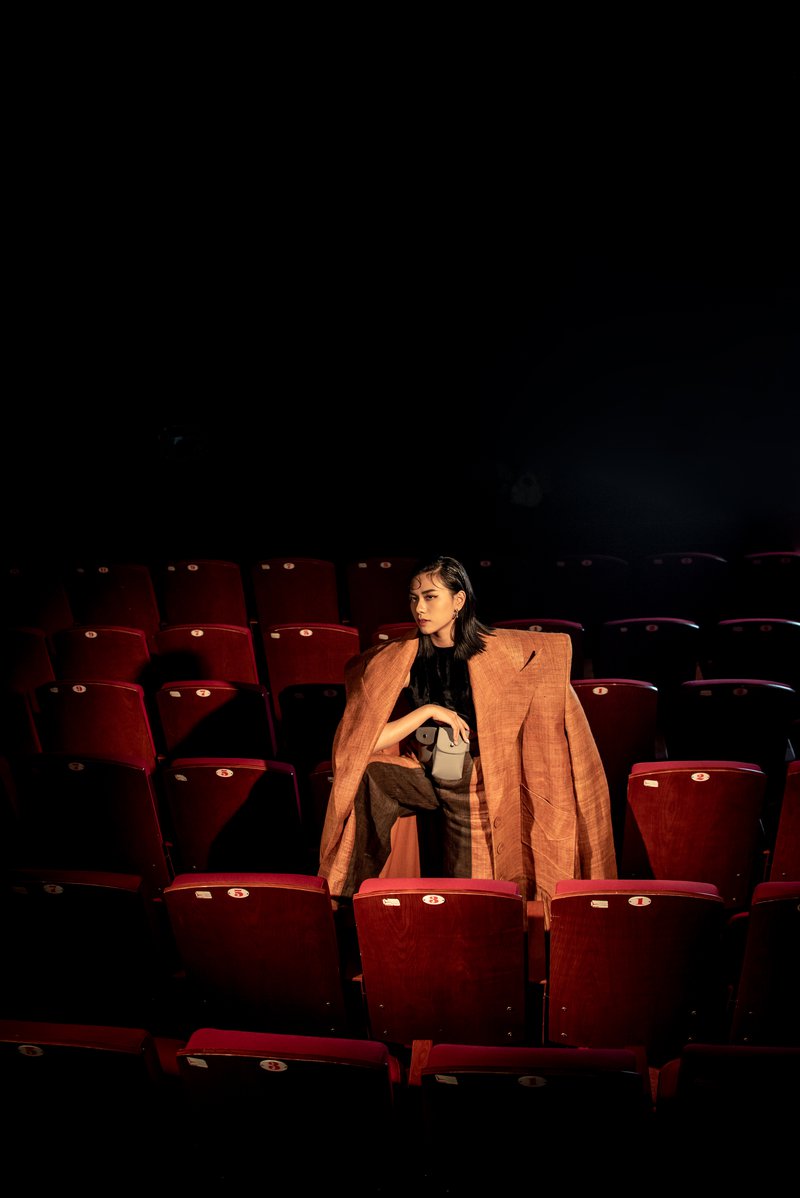
A blazer made of 100% natural fabric in Thanh Lam's Collection.
To ensure that the collection uses mostly environmental friendly materials, the designer have imported pineapple leather (Pinatex) from Spain. This fabric is made of pineapple leaves which is biodegradable - an alternative for animal leather. It is estimated that to make one square meter of Pinatex fabric, about 480 pinapple leaves are needed and the production cost is lower than animal leather.
Old jeans sent from father’s friends
Pham Trung Anh's graduate fashion collection is inspired by Russia. The future designer has transformed patches cut from old jeans to create completely new garments.
“I went to find denim at markets and asked the college to get it directly from a denim company, but it couldn't meet my expectation because the fabric was a bit thick and there weren’t a lot of different shade as I wanted. So, I posted online asking people to donate old jeans and asked my parents to call their friends. Interestingly, among what were sent to me, there are 30 pairs of jeans donated by my father’s friends. The story of studying abroad in Russia from my father and his youth is also the inspiration for my collection." - Trung Anh shared about his collection.
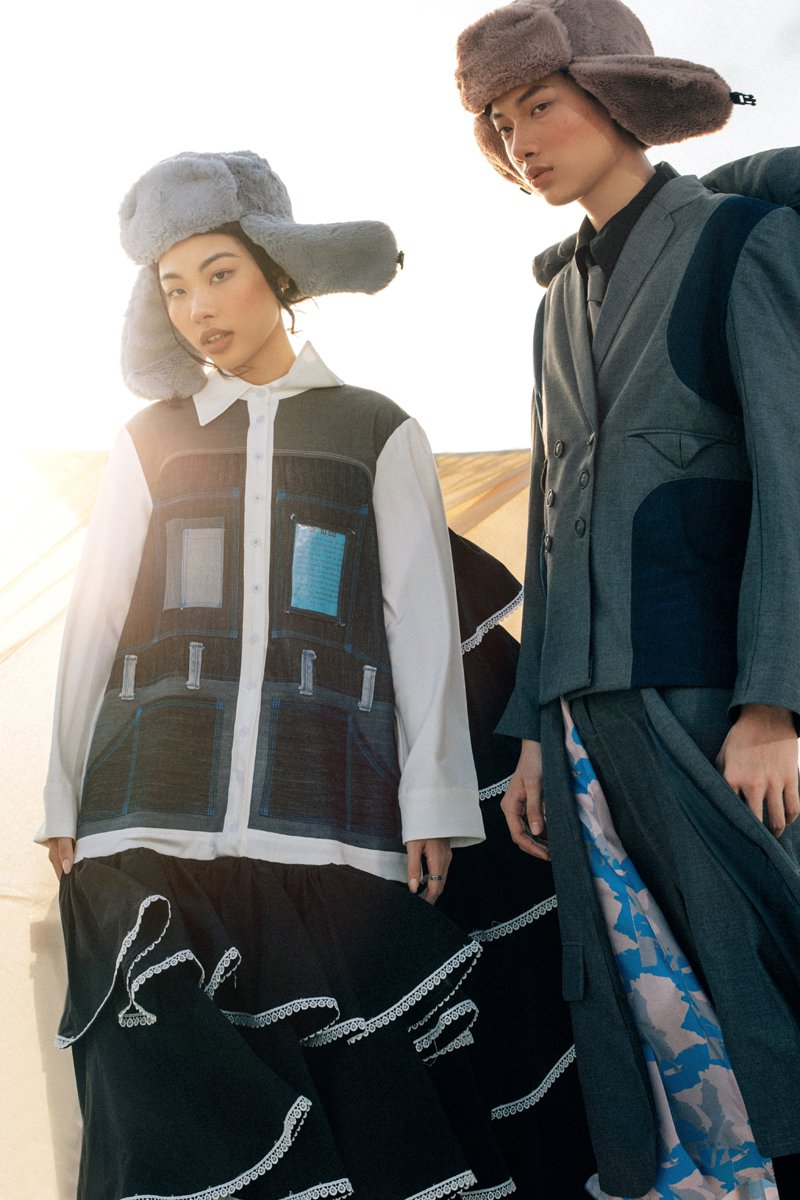
The old jeans are transferred to a new life cycle in the form of modern designs.
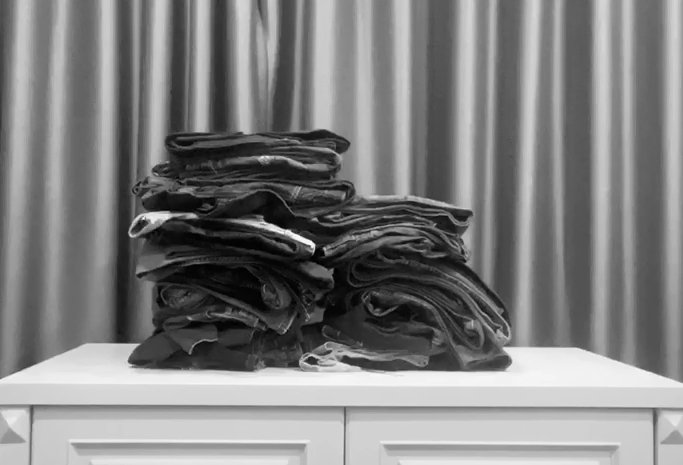
Like Thanh Lam, Quynh Anh's collection has 80% of fabrics dyed naturally from indigo plants and brown tubers in order to reduce chemicals. The designers also limited excess fabric by taking advantage of leftover fabrics and use them for decoration.
“The main colors in my collection are brown to represent the nostalgic vibe and blue to represent the uniform that leaders of the subsidy period used to wear, that’s why I mostly needed natural dyes. In addition, I also use excess fabrics to make decorative details for the garments." - Quynh Anh said about her subsidy period-inspired collection.

The collection is called “Nostalgia” with a vintage color palette.
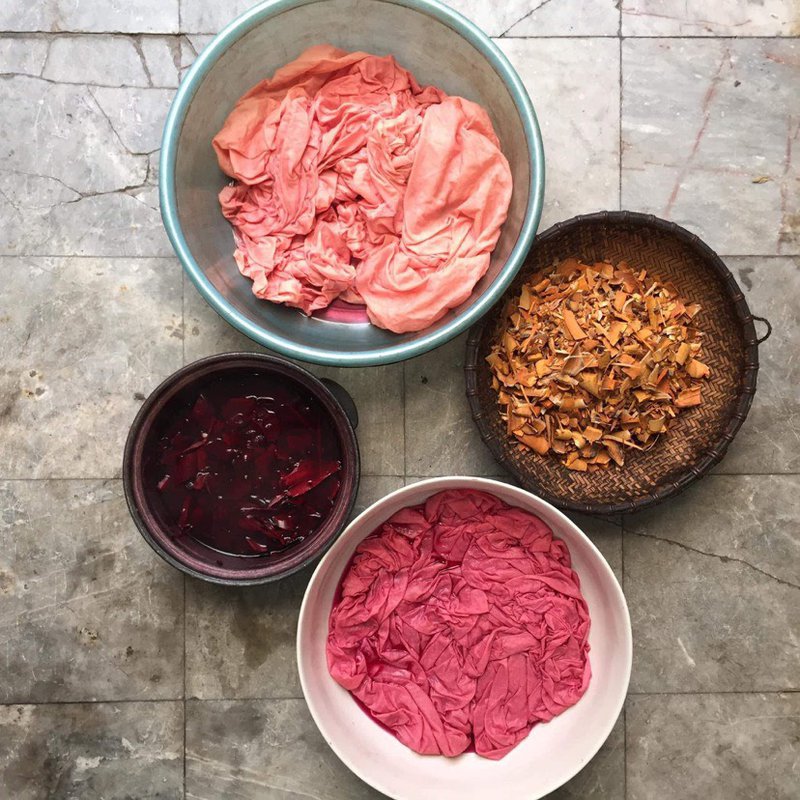
The dye was created from wood heating process.
“Because I used natural fabrics, I usually had to place orders 1-2 weeks in advance because they are rarely available. Some kind of fabrics can take up to 3-4 weeks of dying to achieve the colors that I want,'- Quynh Anh revealed.
Let's look forward to the complete collections of these future sustainable designers at the upcoming Graduate Fashion Week 2021.


